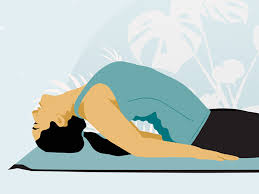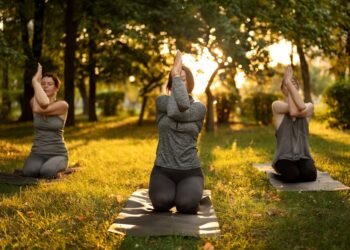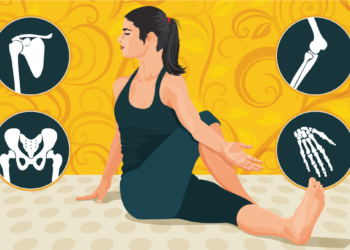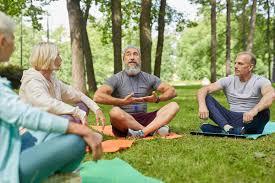As we age, it’s important to maintain a healthy and active lifestyle in order to promote physical, emotional, and spiritual well-being. Yoga is a practice that can be particularly beneficial for seniors, helping to improve flexibility, strength, and balance, and reduce the risk of falls and other injuries. However, it’s important to approach yoga for seniors with care and consideration, and to make modifications to the practice in order to accommodate the unique needs and abilities of older adults. In this article, we’ll explore some of the modifications and considerations that are important to keep in mind when practicing yoga for seniors.
Physical Modifications for Yoga for Seniors
One of the most important considerations when practicing yoga for seniors is to make physical modifications to accommodate the unique needs and abilities of older adults. Some key physical modifications to keep in mind when practicing yoga for seniors include:
Avoiding High-Intensity Poses: High-intensity poses such as inversions or arm balances may be too challenging or risky for older adults. Instead, focus on gentle and accessible poses that promote flexibility, strength, and balance.
Using Props: Props such as blocks, straps, and blankets can be used to support the body and make poses more accessible for older adults. For example, a block or blanket can be used to support the hips in seated poses, or a strap can be used to help reach the feet in forward folds.
Modifying Poses: Many yoga poses can be modified to make them more accessible for older adults. For example, a chair can be used to support balance in standing poses, or the knees can be bent in forward folds to reduce strain on the lower back.
Considerations for Yoga for Seniors
In addition to physical modifications, there are several other considerations to keep in mind when practicing yoga for seniors. Some key considerations include:
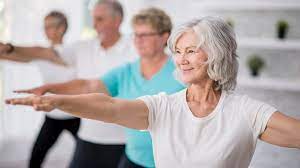
Safety: Safety is a top priority when practicing yoga for seniors. It’s important to work with a qualified yoga teacher who has experience working with older adults, and to practice in a safe and supportive environment.
Health Conditions: Many older adults have health conditions that may affect their ability to practice yoga. It’s important to discuss any health conditions or concerns with your doctor before beginning a yoga practice, and to work with a qualified yoga teacher who can help you to modify your practice to accommodate your specific needs.
Comfort: It’s important to practice yoga in a comfortable and supportive environment. This may include using props to support the body, practicing in a quiet and peaceful space, or wearing comfortable and supportive clothing.
The Benefits of Yoga for Seniors
Yoga can offer many benefits for seniors, helping to improve physical, emotional, and spiritual well-being. Some of the key benefits of yoga for seniors include:
Improved Flexibility: Yoga can help to improve flexibility, reducing stiffness and promoting greater mobility in the joints.
Increased Strength: Yoga can help to improve strength, particularly in the core, legs, and hips, reducing the risk of falls and other injuries.
Improved Balance: Yoga can help to improve balance and stability, reducing the risk of falls and other injuries.
Reduced Stress and Anxiety: Yoga can help to reduce stress and anxiety, promoting greater relaxation and a sense of calm.
Improved Sleep: Yoga can help to improve sleep quality, promoting deeper and more restful sleep.
Tips for Practicing Yoga for Seniors
If you’re interested in practicing yoga for seniors, there are several tips to keep in mind to ensure that you practice safely and effectively. Some key tips include:
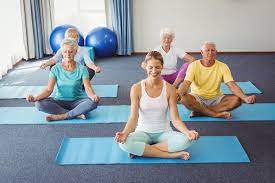
Work with a Qualified Yoga Teacher: It’s important to work with a qualified yoga teacher who has experience working with older adults. A qualified teacher can help to ensure that you practice safely and effectively, and can provide you with guidance and support as you explore the practice of yoga.
Start Slowly: It’s important to start slowly and gently when practicing yoga as a senior. Begin with simple poses and techniques, and gradually increase your intensity and duration over time.
Listen to Your Body: It’s important to listen to your body and respect your limits when practicing yoga for seniors. If a pose or technique causes pain or discomfort, stop immediately and adjust your practice accordingly.
Be Gentle with Yourself: Aging can be physically and emotionally challenging. It’s important to be gentle with yourself and to practice self-care as you explore the practice of yoga.
In Conclusion
yoga is a powerful tool for promoting physical, emotional, and spiritual well-being, particularly for seniors. By making physical modifications and considering the unique needs and abilities of older adults, yoga can be a safe and effective way to promote greater health and vitality in your life. Remember, it’s important to approach practicing yoga for seniors with care and respect for your body. Work with a qualified yoga teacher, start slowly and gently, listen to your body, and be gentle with yourself as you explore the practice of yoga.
With these tips in mind, you can enjoy all the benefits of practicing yoga for seniors, and support your overall health and well-being during your golden years. By incorporating yoga into your daily routine, you can improve flexibility, strength, and balance, reduce the risk of falls and other injuries, and promote greater relaxation and a sense of calm. So, whether you’re a beginner or an experienced practitioner, embrace the practice of yoga, make modifications to suit your unique needs and abilities, and enjoy all the benefits that this wonderful tradition has to offer. With regular practice, you can cultivate greater physical, emotional, and spiritual well-being, and enjoy a greater sense of balance, peace, and harmony in your life.

